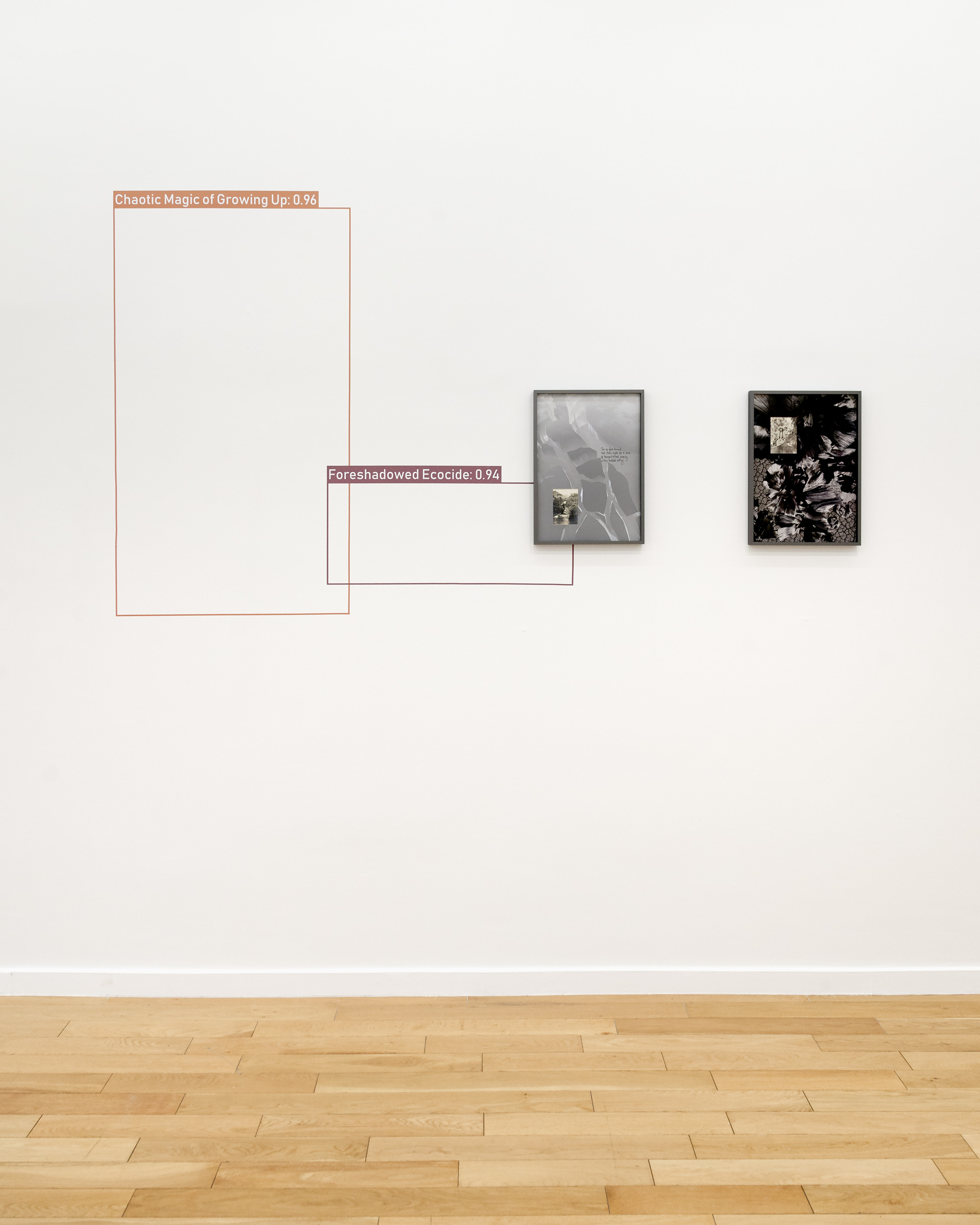After digitization, each image in the archive underwent a multilayered analysis by artificial intelligence as well as interpretation by Fieres. In the collage The river runs through the middle of the image/CV, an original photograph of people on a mountainside is accompanied by the artist's handwritten transcription of a program's image analysis — "the river runs through the middle of the image winding its way through the mountains" — and is embedded within a generated terrain, which functions as a map of that same original photograph's calculated depth. In other words, the surreal landscapes in the collages are 3D data visualizations of numerical information, such as color values or light readings, gleaned from the analog photographs by computer vision models. The written descriptions, which vary in their accuracy, originate from a neural network tasked to describe the scanned images.
The exhibition continues with a two channel video installation that flips through the entire album like a slideshow, while object detection frames — via computer vision technology — highlight different elements of the photographs. While studying the album, Fieres wrote down her abstract impressions of the images and then taught these phrases to a neural network, which is typically trained to segment images according to simpler terms like 'woman,' 'cat' or 'car.' Instead, this network labeled the images according to Fieres’ perceptions like 'Fading carefreeness of early life,' 'Matriarchal Gravity,' 'Botanical Chaos' or 'Foreshadowed Ecocide.' The detection frames chart a complex conversation between artist and machine, an exchange of subjective and objective evaluation.
In the final video work, It seems to capture the beauty and majesty of nature, artificial intelligence visually eclipses the archival source material. Fieres leveraged the descriptions from the aforementioned neural network's image analysis of the photographs as prompts for yet another neural network to generate entirely new animations. The result is a series of uncanny landscapes, frequently populated by the distorted figures and faces of people, each overlaid with a written and spoken version of the prompt. The narrating voice is that of the artist herself, yet it is not her speaking — an AI was taught to replicate her tone and manner of speech — alongside a soundscape recorded at Berlin's Botanical Garden. Blending the natural and artificial, It seems to capture the beauty and majesty of nature offers a glimpse through 'eyes' of AI and its unique perspective on humanity and nature. At the same time that AI learns from our reality via photographs and attempts to understand in order to convincingly replicate it, the electronic waste and consumed energy put that very environment at risk. Much like when people, such as the French family migrating to Brazil, settle in new areas and populate them, AI alters the earth as it interacts with it.
In navigating the obscure space between perceived opposites — past and future, analog and digital, two-dimensional and three-dimensional, fact and fiction — Fieres seems to collapse these binaries. Every historical and digital action has a real world consequence, from the ecological impact of the computers running these processes to the artist's irrevocable decision to upload her own and the family's likenesses online, where they will now be stored forever. Balancing these tensions, We will all be here always presents a portrait of technology at this distinct moment in time — given the speed of artificial intelligence's transformation, the very programs utilized in these artworks may be obsolete by the exhibition's opening.
















